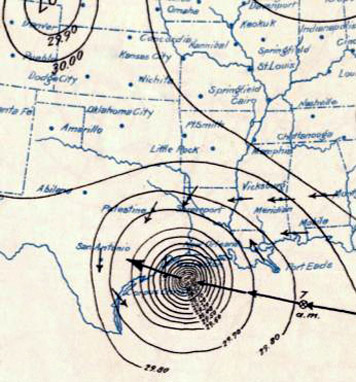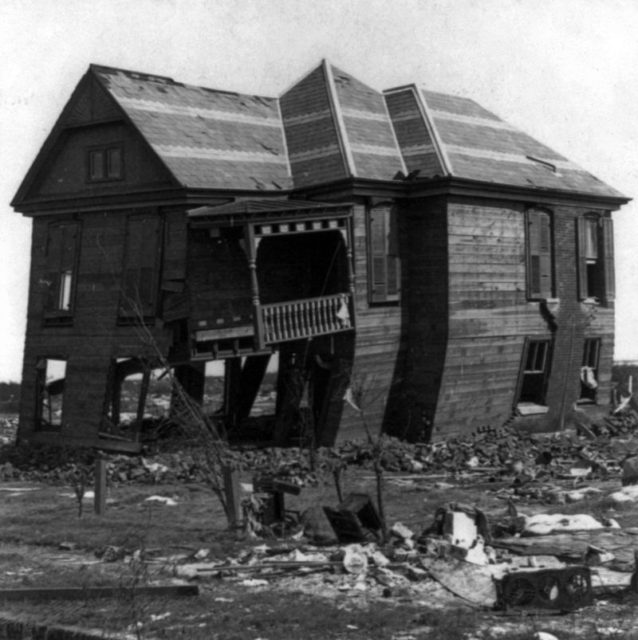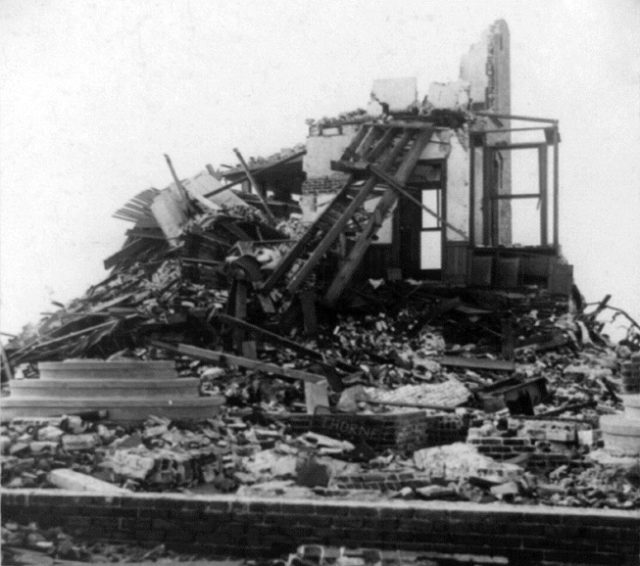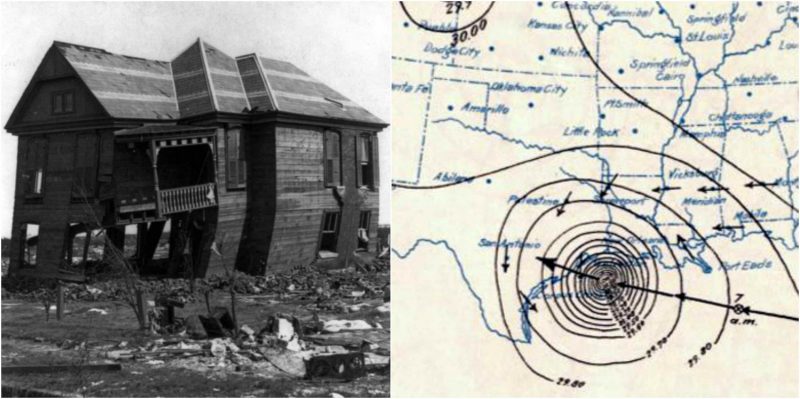During the 19th century, Galveston, a booming community, was one of the largest cities in Texas.
The city was founded in 1816 by a French pirate named Louis-Michel Aury who wanted to build a commercial and military port that would support the Republic of Mexico’s fight against Spain. Finished in 1825, the port soon became the most important in Texas. Many wealthy industrialists invested in the city and it flourished for decades.

In 1900, Galveston’s Golden Era ended when the city was hit by the deadliest natural disaster ever to strike the United States. The Great Galveston Hurricane destroyed over 3,600 buildings and killed between 6,000 and 12,000 people.

At the beginning of the 20th century, meteorologists had limited means of accurately predicting weather conditions. Since radar, sonar, and satellite technologies were still far in the future, meteorology of the time relied on observations and now-obsolete equipment. Still, in many cases, experts successfully managed to warn the community of imminent storms of major magnitude.
However, Isaac Cline, the chief meteorologist of Galveston of the time, was partially responsible for the horrible consequences of the Great Galveston Hurricane. In the second half of the 19th century, a nearby port town of Indianola on Matagorda Bay was completely destroyed by a powerful hurricane, and the Galveston community was aware of the possibility of it happening to them. Also, Galveston is located on a flat island and, at the time, it was situated only eight feet above sea level.

Since Galveston’s founding in the first half of the 19th century, the city had survived numerous minor storms and suffered only minor damage. Still, the community was aware of a possible danger of major storms and numerous citizens urged local authorities to secure the city by erecting a thick concrete seawall.
However, the seawall was never constructed. In 1891, chief meteorologist Isaac Cline published an article in the Galveston Daily News in which he stated that a seawall was not needed to protect the city because it would be impossible for a devastating hurricane to strike the island. Furthermore, throughout the 1890’s, investors from all over the United States constructed many buildings on the beaches of Galveston. The construction works diminished the sand dunes and destroyed Galveston’s shoreline, and thus its natural ability to defend the city from tidal waves.

Isaac Cline was horribly wrong. On September 8, 1900, a day before the hurricane hit Galveston, he and his team of meteorologists realized that a severe storm was rapidly approaching. Although the Weather Bureau decided not to issue any hurricane warnings, Cline breached the protocol and issued a warning. Unfortunately, most citizens of Galveston ignored the warning because the weather seemed to be stable.
On the morning of September 9, a hurricane with winds of up to 145 mph hit the city. The storm wreaked havoc for nearly 12 hours and destroyed most of the city’s buildings; the buildings that survived were mostly solidly built mansions in the Strand District. The infrastructure of the city was completely destroyed and the death toll was devastating.
When the storm died down, many people blamed Isaac Cline’s incompetence for the city’s immense number of casualties. Cline defended himself by claiming that he traveled to the beach when the disaster started and warned many people of the incoming hurricane. His claim remains questionable, as no survivors corroborated his statement. But Cline also suffered a terrible loss during the storm: his own pregnant wife was killed.

It took decades for the Galveston community to recover from the disaster. Most of the city has since been rebuilt and, with the new weather-tracking technology and disaster protocols, the city’s defense against hurricanes reached a new level.
However, after the hurricane, many investors pulled out of Galveston and invested their money in nearby Houston, and the city never regained its prominence.
